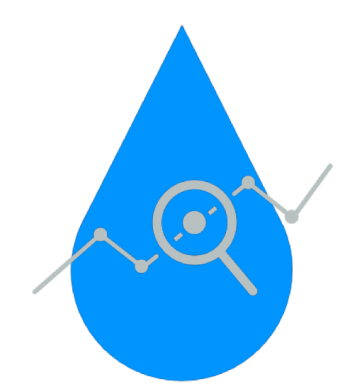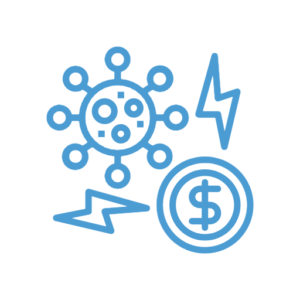At the start of the pandemic, there was uncertainty about how water and wastewater utilities’ revenues and finances might be affected. Many utilities and local governments were concerned with loss of revenue from the commercial sector, as well as the financial implications of statewide moratoria on late fees and disconnections for non-payments designed to ensure that everyone has adequate access to water and sanitation during a designated public health emergency. Various polls and case studies were analyzed to gauge early and ongoing effects on the utilities’ financial condition. Now, the release of audited data in local governments’ annual financial statements provides additional information and insights. This blog post summarizes how over 300 local government water and wastewater utilities in North Carolina fared at the end of Fiscal Year 2020 (end of June 2020 for all local governments in the state) compared to previous years. The audited data include the first three months of the pandemic.
Author: Shadi Eskaf (Page 1 of 5)
SOG Environmental Finance Ctr
At the time of this writing, Congress is debating passing another economic stimulus bill to provide relief against the COVID-19 pandemic. As the pandemic created hardships throughout the country for a year, the U.S. government passed two stimulus bills in 2020 that created or funded multiple financial relief programs for various needs. While there is no program that specifically provides relief to water and wastewater utilities’ losses in revenue, there are several programs funded through the two federal relief bills that can help customers pay past due or current water and/or wastewater bills (“water bills” for short). Water bill payment assistance relieves some of the financial burden on customers that are in most need, and also provides utilities needed revenues to cover unpaid bills and prevent shutoffs in many cases. While there is financial assistance to pay water bills, the fragmentation of the programs can be complicated to navigate. This blog post provides a summary and links to our new factsheets that describe several federally-funded coronavirus relief programs to date that may be used to pay water bills. Information about where customers can go for help is provided.

Measuring the Impact: An Evaluation of 379 ARC-Funded Water and Wastewater Projects (FY 2009 – FY 2016)
Funding programs that support drinking water and wastewater infrastructure projects generate benefits that exceed simply providing cost savings to the communities receiving subsidized loans and grants. Water and wastewater infrastructure is critical for economic development, environmental protection, public health, and various aspects of improving communities’ quality of life. When investing in water and wastewater systems, attention is often given to the funding amounts, cost savings, and improvements to the physical infrastructure, such as how many miles of distribution lines were replaced. Quantifying the broader outcomes, such as improvements to local economic and quality of life conditions, is more challenging. Yet, the Appalachian Regional Commission (ARC) sought to evaluate the impact of its water and wastewater investments in those terms. To accomplish this program evaluation, the EFC at UNC and researchers at Virginia Tech recently assessed 379 projects that were at least partly funded by ARC between Fiscal Years 2009 – 2016. The results show that ARC’s water and wastewater investments contributed to significant positive economic growth and development across the Appalachian Region. Continue reading
Water and wastewater utilities are adapting to the rapidly changing conditions imposed across the country and the world by the COVID-19 pandemic. With stay-at-home orders, closures of schools, restaurants, and other businesses, and major disruptions to the workforce and operations, utilities are changing practices and procedures every day to continue to operate and provide the general public with an essential public service. How will these changing conditions and operations affect utility finances? How will utilities accommodate these financial effects?
While the current environment continues to rapidly change, it is nearly impossible to comprehensively assess all financial implications to utilities at this time. However, some practices are becoming more commonplace among utilities across the country. This is an attempt to consider their financial implications on utilities on a broad level, and it follows a March 23rd webinar that we conducted with the UNC School of Government. As the weeks go on, utilities should monitor their revenues and expenses to more accurately estimate the effects of COVID-19 on their own finances. Continue reading
The year 2010 marked the start of an unusual period in the water sector. For five years running, total capital outlays by local governments in the United States on water and wastewater infrastructure declined year after year. This period coincides with the Great Recession and towards the end of spending under the American Recovery and Reinvestment Act (ARRA). Yet infrastructure continued to age, and construction costs continued to rise at about 2.6 percent per year during that period. Have we finally come across a sign that capital expenditures on water and wastewater infrastructure may be growing again?






